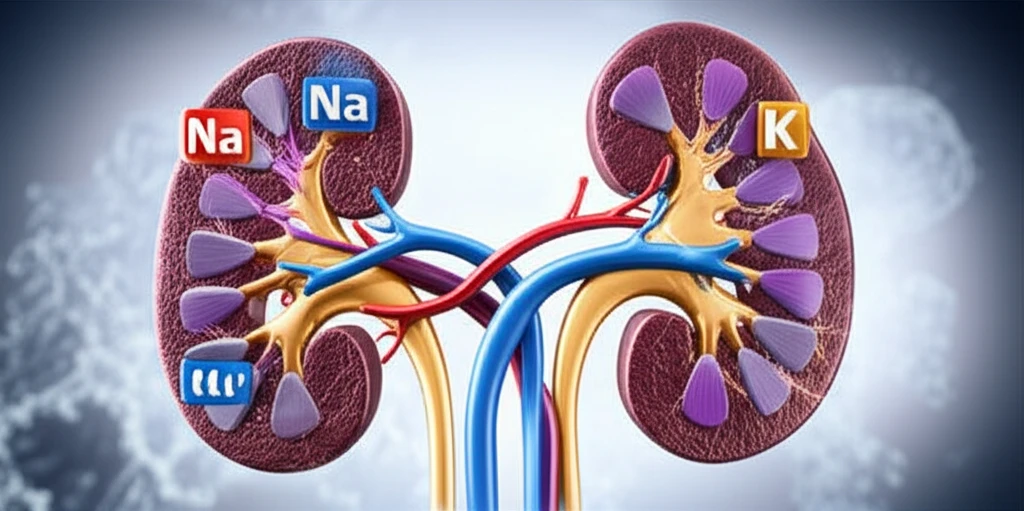
Kidney Health Alert: Are Sodium and Potassium Levels Affecting Your Uric Acid?
"New research reveals the critical link between sodium, potassium, and uric acid excretion in chronic kidney disease, particularly for those with hypertension. Learn how to manage your diet for better kidney health."
If you're managing chronic kidney disease (CKD), you’re likely familiar with the constant balancing act required to maintain your health. Among the many factors to consider, the relationship between hypertension, hyperuricemia (high uric acid levels), and the excretion of key minerals like sodium and potassium plays a crucial role. Recent studies shed light on how these elements interact, particularly in individuals with CKD.
Hypertension and hyperuricemia often go hand-in-hand, creating a complex cycle of cause and effect. High blood pressure can impact kidney function, leading to reduced uric acid excretion, which in turn can exacerbate hyperuricemia. Adding another layer to this intricate web, sodium and potassium levels—influenced by diet—can significantly affect blood pressure and kidney health.
New research published in Kidney Blood Pressure Research uncovers critical associations between urinary sodium and potassium excretion and renal uric acid handling in CKD patients. This article translates these findings into actionable insights, offering a clear understanding of how your dietary choices can impact your kidney health and uric acid levels.
The Sodium-Potassium-Uric Acid Connection: What the Study Revealed?

The study, conducted with 428 CKD patients, explored the correlation between urinary sodium and potassium levels and how the kidneys handle uric acid. Patients were divided into two groups: those with hypertension and those without. Researchers used sophisticated statistical methods to analyze the relationships between these factors.
- Hypertension Matters: In hypertensive patients, higher fractional excretion of sodium (FEna) was linked to lower levels of uric acid in urine (24-hUur) and reduced uric acid clearance (Cur). Conversely, FEna was positively correlated with the fractional excretion of uric acid (FEur).
- Potassium's Role: Fractional excretion of potassium (FEk) also showed a positive correlation with FEur in hypertensive individuals.
- Sodium-Potassium Ratio: A higher urinary sodium/potassium ratio (Una/k) was associated with lower 24-h Uur and Cur but higher FEur.
- eGFR Impact: The relationships between FEna, FEk, and FEur were most pronounced in patients with lower estimated glomerular filtration rates (eGFR), indicating that kidney function significantly influences these dynamics.
- Non-Hypertensive Differences: In non-hypertensive patients, a higher FEna was only linked to lower 24-h Uur, with no significant relationships observed for Cur or FEur.
Practical Steps for Managing Your Kidney Health
Understanding the connection between sodium, potassium, and uric acid can empower you to make informed dietary choices that support your kidney health. Here are some practical steps to consider:
